Nakayama is in between Narita And Haneda International Airport
<クッキーについての同意並び欧州居住者向けプライバシーポリシー>
中山・下総・散歩道
Hokkedo Hall In Nakayama Hokekyoji Temple
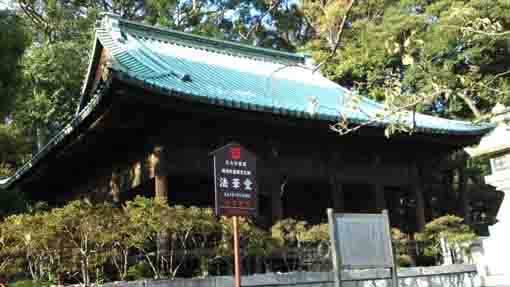
Hokkedo Hall in Nakayama Hokekyoji Temple is standing behind Yonsokumon Gate on a small hill on the west of Soshido Hall. Shochuzan Hokekyojishi and Edo Meisho Zue tell that it was called 4 kando since it had costed 4 kan (an old monetary unit). And Hokkedo is one of the oldest buildings in Nakayama Hokekyoji Temple. Katsushika Shiryaku said it was built in spring in 1359. Shochuzan Hokekyojishi described that it was built when the venerable Nichijo was converted to the Founder Nichiren, and it is a scared building of Nichiren since he held the hounderd days preaching there. Moreover, the letters in the frame hanging on the front of Hokkedo Hall was written by Koetsu Honami. In spring, under the blue sky, Hokkedo Hall colored in pink with many azaleas blooming around is beautiful. Why don't you visit it?
Hokekyoji Hokkedo
Hokekyo-ji Hokke-do; The Important Cultural Property Designated The National Government
Date of Designation; May 24th of Taisho 5th (1916)Date of construction; Late Muromachi Period
Architectural structure; The length of beam 9.1meters width, a single story in Irimoya-zukuri (hip-and-gable roof structure) with copper thatching the roof with shingles, with munafuda 5 mai (five wooden tags commemorating the foundation of the temple).
Hokke-do is the main halll of Hokekyo-ji Temple where enshrines the Shaka-sonzou and Taho-sonzou as the principal images. It was built in Wakamiya by Jonin Toki in Bunei Period (late 13th century, and it moved to Nakayama later. It was called Yon(4)-Kan-do, as its construction fees were 4 kan. (1 kan was a unit of currency in Middle Ages in Japan.)
According to Edo-Meisyo-Zue, Hokke-do had dedicated the statue of isson-shi-bosatsu carved by the founder Nichiren. Noriakira Ota learned a lot from Jonin Toki built the Buddhism hall in his yard as it called Honmyo-ji Temple. The Hokke-do is built by skilled carpenters from Hida in Kamakura Period. The hall is the first place where the founder Nichiren had preached his own interpretation of the Lotus Sutra. And it also introduces the sentences in the letters Nichiren and Jonin Toki talking about the construction of Yon-ken-do.
The architectural structure and style in Hokke-do now in Hokekyo-ji obviously shows that it might be rebuilt late Muramachi Period. Originally, it stood at the same ground as the Soshi-do, it moved to the present location when Soshi-do started to rebuilt in Mid-Edo Period.
The building is a small 5-ken-do, the width is 5 ken(9.1meters) and the depth is 4 ken (7.28 meters), the copper was roofed late Edo Period, originally it had been thatched. The hall is divided into 2 rooms, a open space ge-jin standing wide interval between the pillar and a ni-jin having only one room. The position of the pillars and Shumidan (the platform to place and enshrine Buddha in Buddhist altar) shows the aspects that took wider space as possible. Moreover the hengaku 'myo-hokekyo-ji' hang up on the front (the important property designated by Ichikawa City) was written by Koetsu Honami
The Hokkedo is basically designed Zen-Sect style, and it skillfully adopts Japanese style. The hall is the important historical assets, so it is one of the oldest Buddism halls of Nichiren Sect.
March 1999, Ichikawashi Board Of Education
法華堂前案内板より
The Framed Letters 'Myo Hokekyoji' Written By Koetsu Honaami
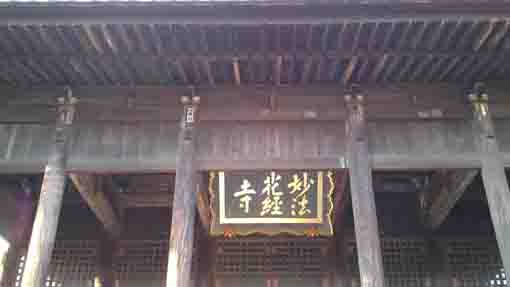
Hokkedo's Hengaku Written by Koetsu Honami; The Cultural Property Designated by Ichikawa City
Koetsu Honami(1558~1637)
Koetsu Honami was a creative artist early Edo Period living in Kyoto. He was born in the distinguished sowrd appraiser, and given the land at Takaga-mine in northern Kyoto. (Now there is Koetsu-ji Temple) He was famous for one of the three great calligrapher in Kanei.He learned Japanese painting a lot by Yusho Kaihoku, and belonged to the Tosa group and he had given some influence to Sotatsu Tawaraya and Korin Ogata later. He created new techniques to make Makie. He had some genius talent on the Ceramic Art, the Carving Noh-mask,the Gardening and so on. And he established the school of tea ceremony.
※ the three great calligrapher in Kanei; Tadanobu Konoe, Koetsu Honami and Akinori Shokado in early Edo Period.
Azaleas Around Hokekyo-ji
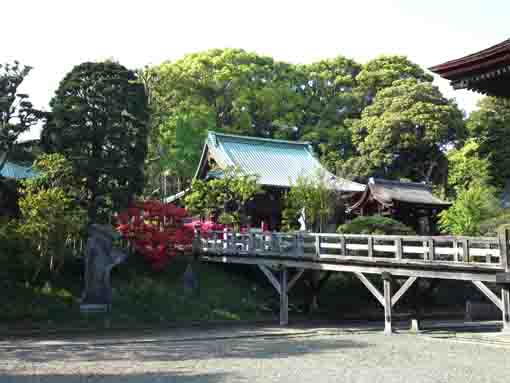
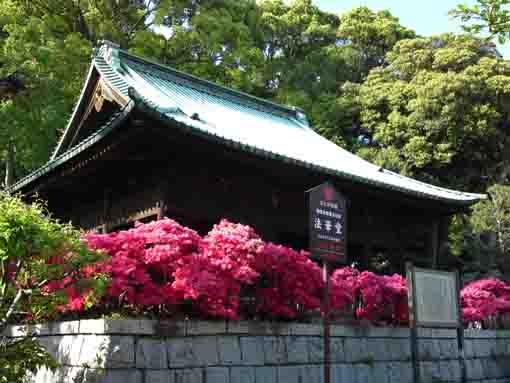
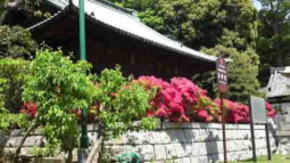
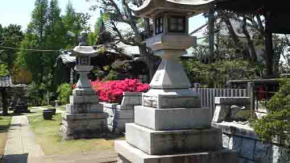
Some beautiful azaleas bloom in Hokkedo, Yonsokumon and Ugajindo in early Summer
引用・抜粋および参考
法華経寺法華堂前案内板
市川市ホームページ
市川市立図書館ホームページ
正中山法華経寺誌
日蓮宗各本山名所図会
房総叢書 : 紀元二千六百年記念. 第8卷葛飾紀
房総叢書 : 紀元二千六百年記念. 第6卷 葛飾誌略
新訂 江戸名所図会6 ちくま学芸文庫
大辞林
日本世界人名辞典
新制版 日本史辞典
ブリタニカ国際大百科事典
ウィッキペディア
The Location and Access to Hokke-do In Nakayama Hokekyoji
Hokke-do In Nakayama Hokekyoji Temple
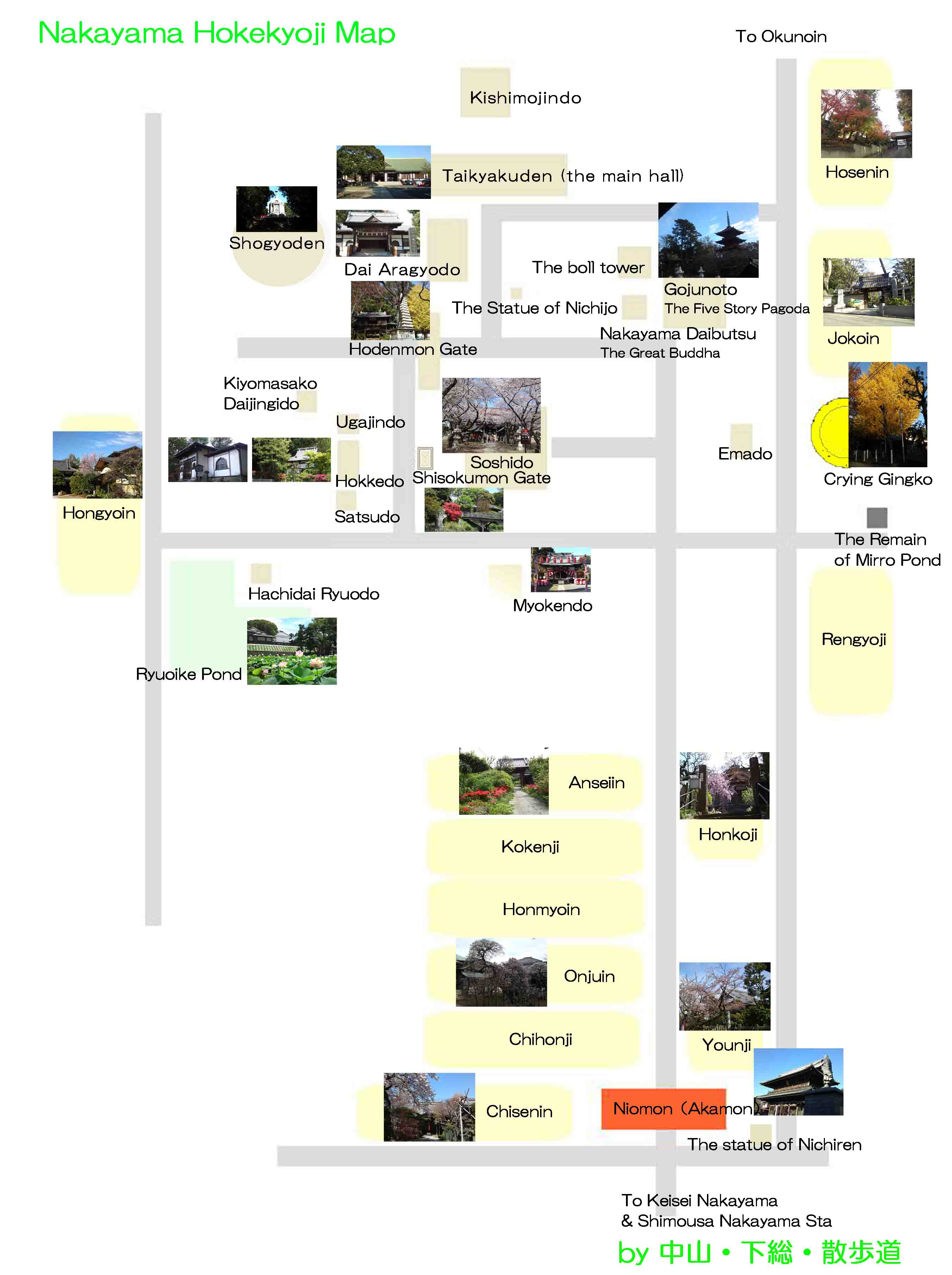
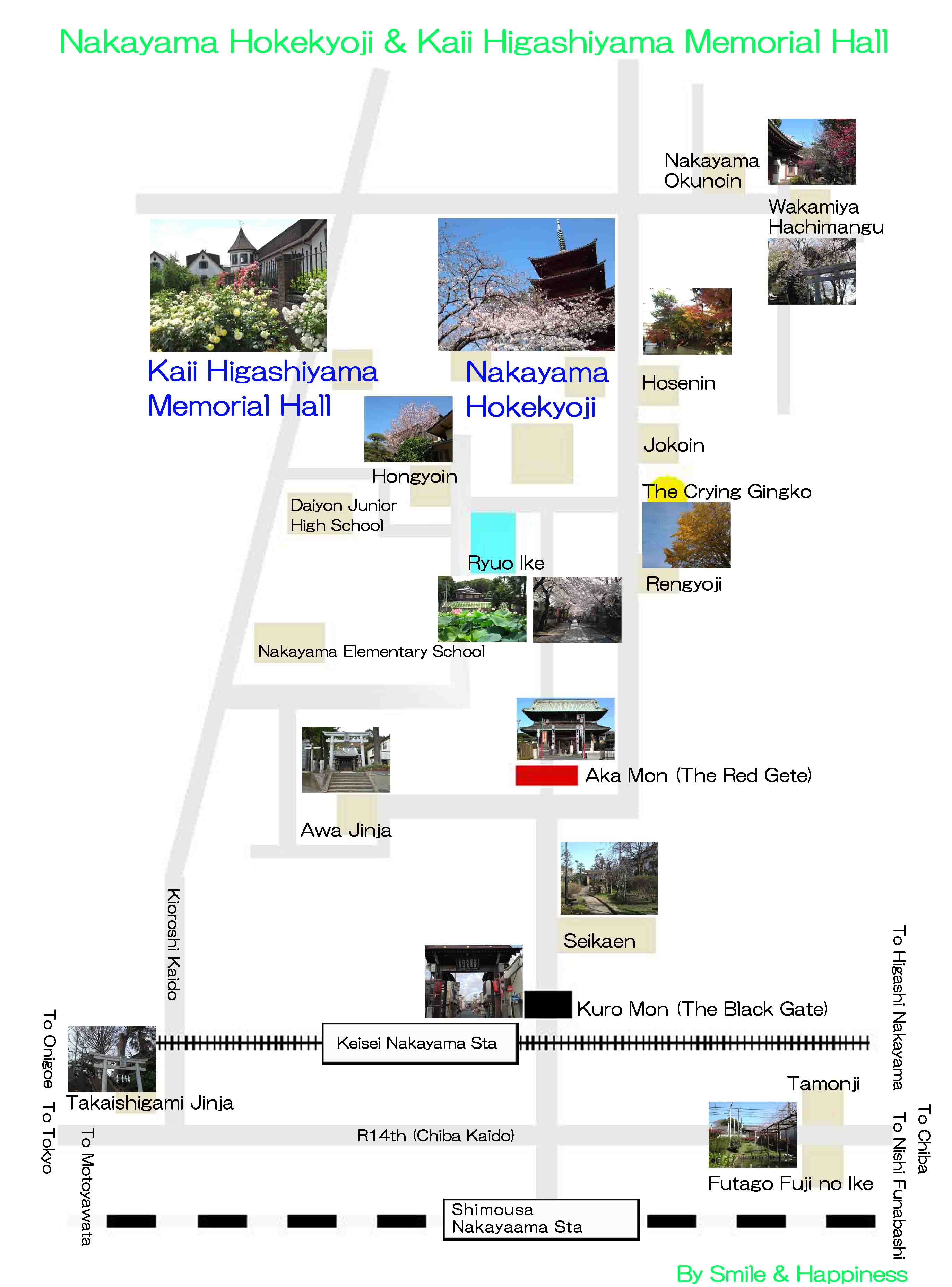
The map near Nakayama Hokekyoji and Kaii Higashiyama Memorial Hall
PDF of the map near Hokekyoji and Kaii Higashiyama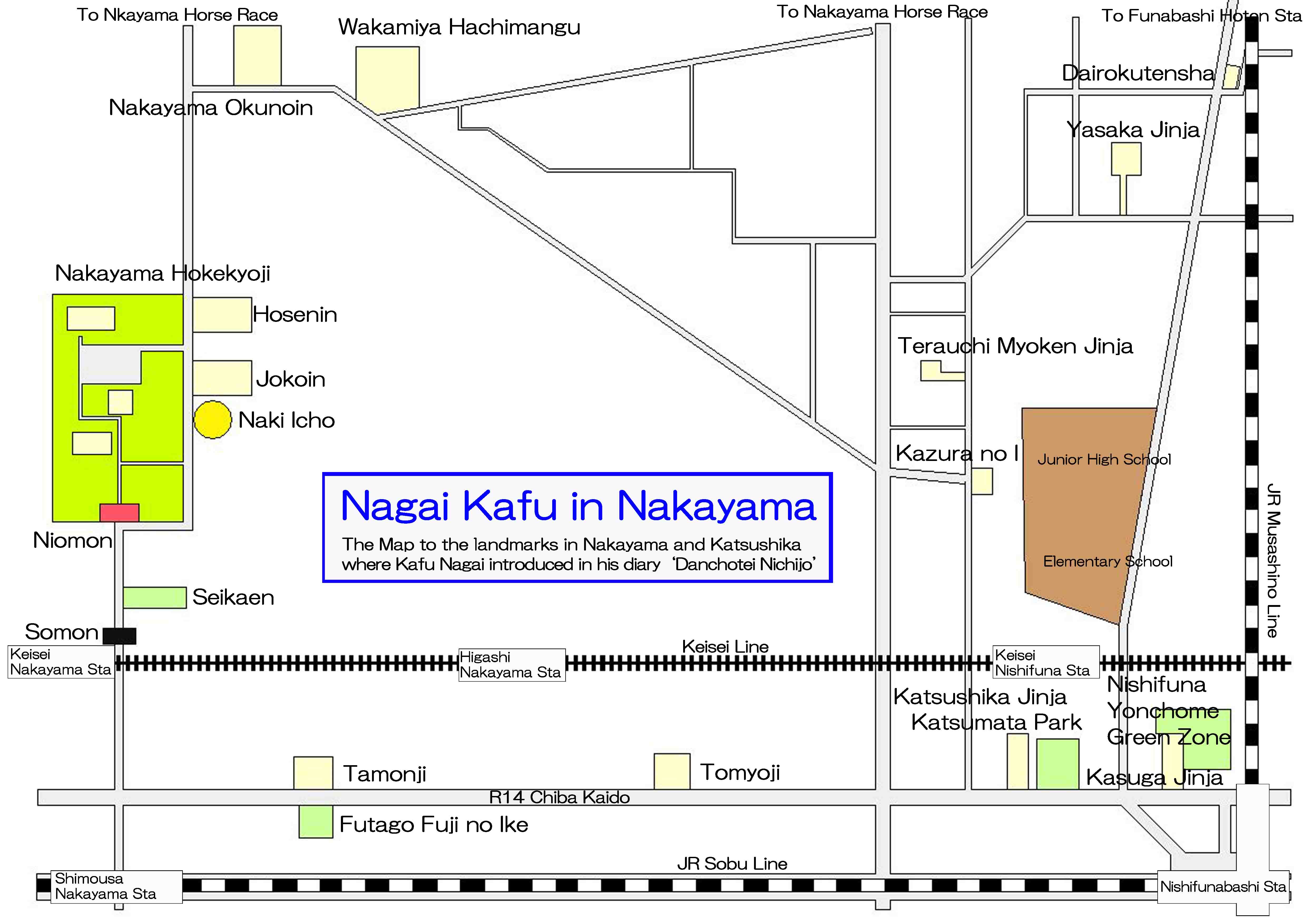
The map to the landmarks where Kafu Nagai introduced in his book
PDF of the map of the noted spots where Kafu Nagai visited- Hokkedo Hall in Nakayama Hokekyouji Temple has a great accessibility from both Narita and Haneda International Airport.
- From Narita International Airport, take Keisei-line and get off Keisei-Nakayama Sta, take minimally 40 minutes from Narita Airport.. And also take JR Sobu-express line, transfer the line at Funabashi to Sobu-Local line, get off Shimousa-Nakayama Sta.
- From Haneda International Airport, take Keikyu-line bound to Narita, and get off Keisei-Nakayama Sta.
- From Tokyo Sta, take Sobu-Express line bound to Chiba or Narita, transfer the line to Sobu-Local line bound to Chiba, Tsudanuma, or Nishi-Funabashi at Ichikawa Sta, get off Shimousa-Nakayama Sta.
- From Akihabara Sta, take Sobu line bound to Chiba, get off Shimousa-Nakayama Sta.
- Take 5 minute walk from Keisei-Nakayama Sta, and take 8 minutes walk from Shimousa-Nakayama Sta.
- 2-10-1 Nakayama, Ichikawa-shi, Chiba-pref, Japan
Sightseeing in Nakayama Shomousa With Mangas
Sightseeing in Nakayama Hokekyoji Temple with Manga (Long Version)
Sightseeing in Nakayama Hokekyoji Temple with Manga (Short Version)
The Landmarks in Nakayama Hokekyouji Temple
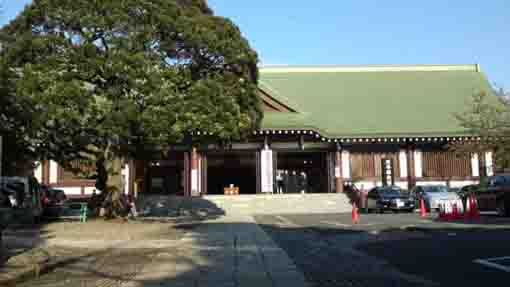
Honin(Taikyakuden)・Kishibojindo(Sonshindo)
Takikyakuden is the main hall of Hokekyoji and it has the business office and Kishibojindo Hall dedicated to the goddess of children on the end of the long corrido of the main hall.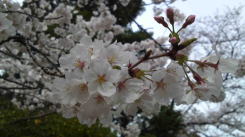
The Four Seasons In Hokekyoji
In spring, there is millions of cherry blossoms in Hokekyoji and in summer, lotus blooms on ryuo-ike pond. In fall, there are beautiful colored leaves. Every season, visitors could enjoy seeing the sights.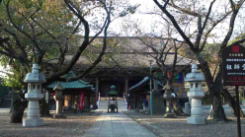
Soshido(Daido), the nationally important cultural property
It is characterized the twin hip-and-gable roof structure (hiyoku-irimoya-style), and hengaku written by Koetsu Honami hangs in front.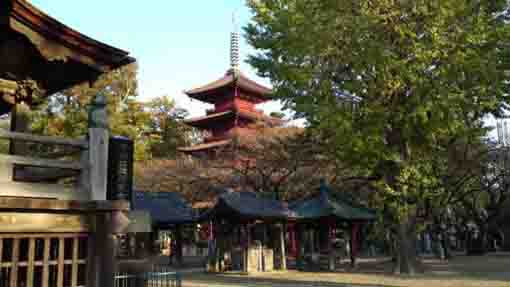
Goju-no-to (the five-story pagoda) , the nationally important cultural property
It was built in early Edo period (1622) by request of Koshitsu Honami supported by Maeda Family in Kaga.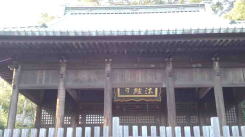
Hokke-do(the nationally important cultural property)
It was built in Kamakura period.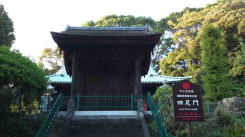
Yon-soku-mon (the nationally important cultural property)
It was moved from Aizen-dou in Kamakura 700 years ago.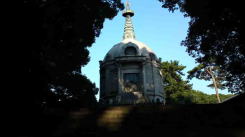
Shougyoden (the treasure hall)
It was designed by the famous architect Chuta Ito, it stores many scripts written by the Founder Nichiren.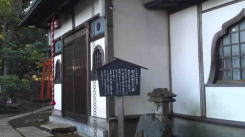
Shogan-jyoujyu-kigan-do (kiyomasa-kou-dai-zingi-do)
It enshrines Kiyomasa Kato, one of the most famous daimyo in Sengoku period.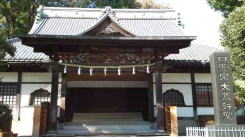
Aragyodo Hall (the hall where Buddhiist priests practice for 100 days in winter severly)
From Nov 1 to Feb 10, hundreds of Buddhist priests practice severly every year.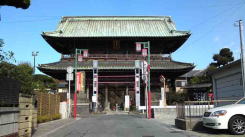
The Nio-mon Gate (The Deva Gate)
The henguku hunged in front of the gate was written by Koetsu Honami, famous artist in Momoyama Period.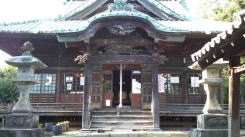
Setsu-do
It was built for worshipping Jurasetsunyo, Kishibozin, Daikokusama.
Black Gate(a tangible cultural asset by Ichikawa City)
It is also called Sou-mon (the main gate).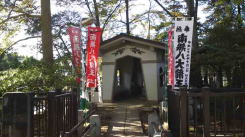
Hachidai-ryuo-do
The founder Nichiren built the small shrine to dedicate the dragon god to pray for rain.
Ugazin-do
It enshrins Ugazin who is the guardian deity of Hokekyou-ji Temple.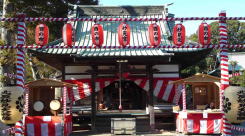
Myouken-do
It dedicates Hokushin Myouken Star that the Chiba Family deeply believed in , Hokekyoji traditionally succeeds. In November, Tori-no-ich is held in the site to dedicate the star.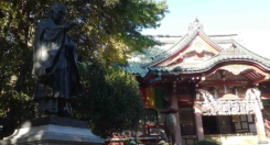
Oku-no-in (the first place where Nichren had preached at)
The founder Nichiren preached first time at the Toki's castle called Wkakamiya Yakata. And Toki built a temple 'Hokkeji', it is the origin of Oku no In.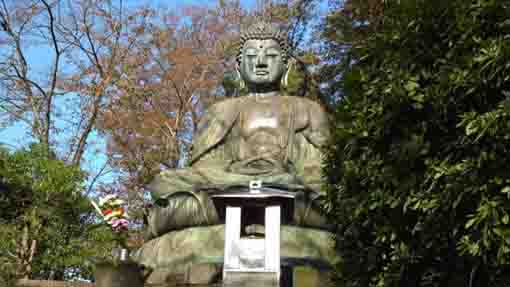
The Great Buddha(The Seated Statue of Shaka Nyorai)
It was built in 1719 by famous caster Ota Suruga-no-kami in Kanda. It is the bigest great Buddha in Chiba prefecture.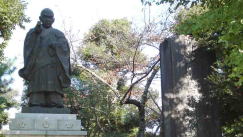
The statue of Nichijo and Naki-Icho
Nichijo was the first abbot of Nakayama Hokekyoji Temple and Naki Icho is a gingko tree having a sad legend.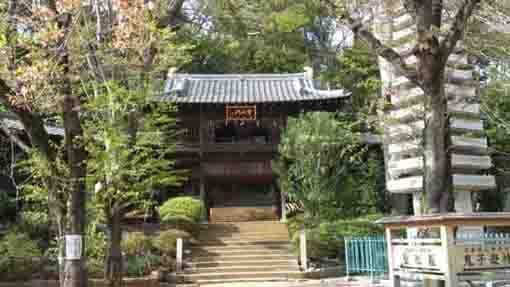
Kagami-ike-ato (the remain of the pond like a mirror), Emado hall, Hoden-mon gate, Ryuenkyo bridge
There are some other landmarks in Nakayama Hokekyoji Temple.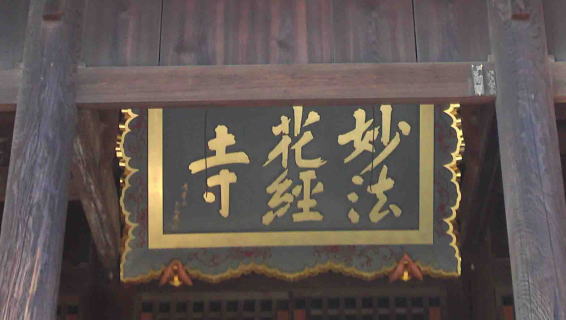
The artists, poets and writers related to Hokekyoji Temple
Koetsu Honami specially remained his calligraphy in Hokekyo-ji Temple, and Shiki Masaoka, Kafu Nagai discribed it well.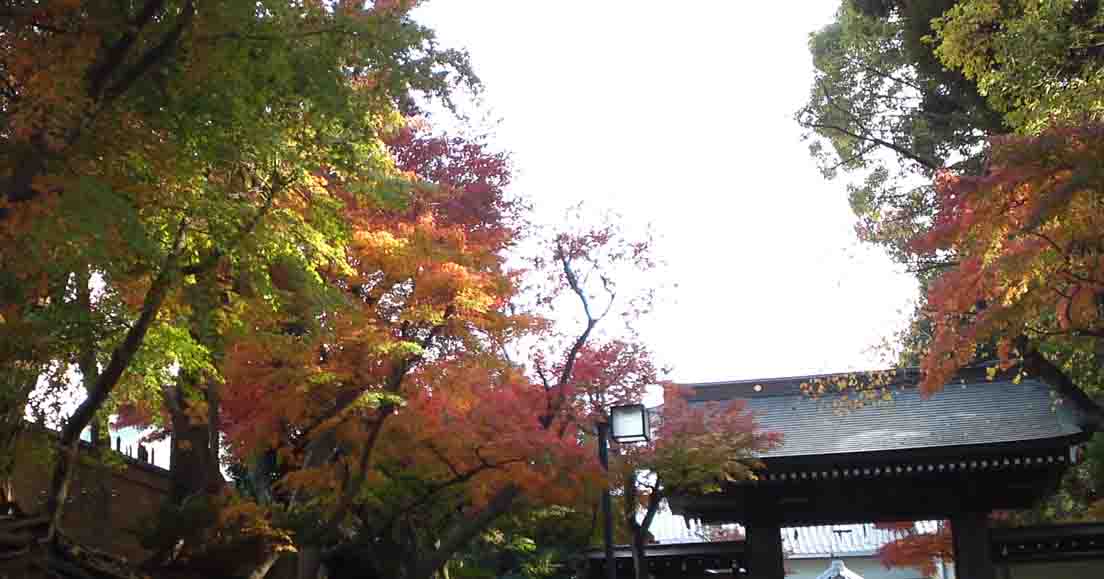
The Tacchu Temples and the Branch Temples in and around Nakayama Hokekyoji Temple
Some tacchue temples are introduced in this page.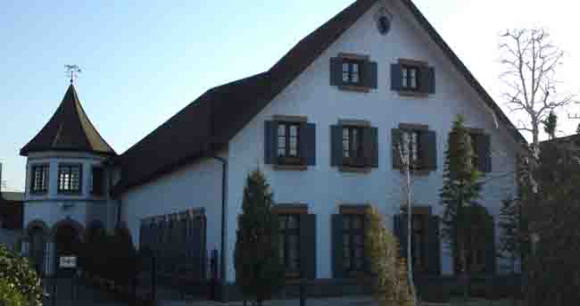
A Walk on the the area around Nakayama Hokekyoji Temple
There are some noted spots, Kaii Higashiyama Memorial Hall and so on, near Hokekyoji.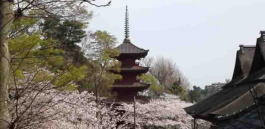
The Popular Viewing Sakura Spot / Nakayama Hokekyoji Temple
Cherry blossoms in Hokekyoji are amazingly wonderful.- 広告 Advertisement -
